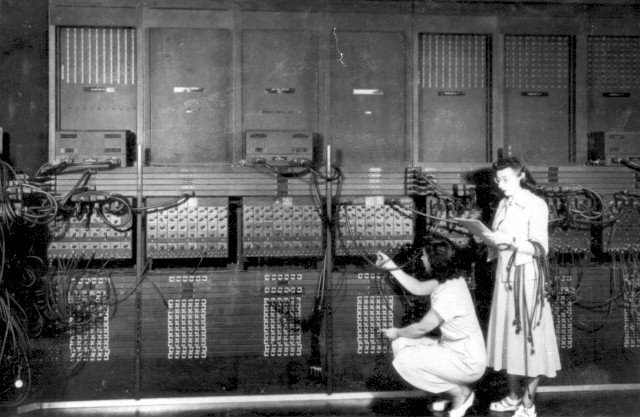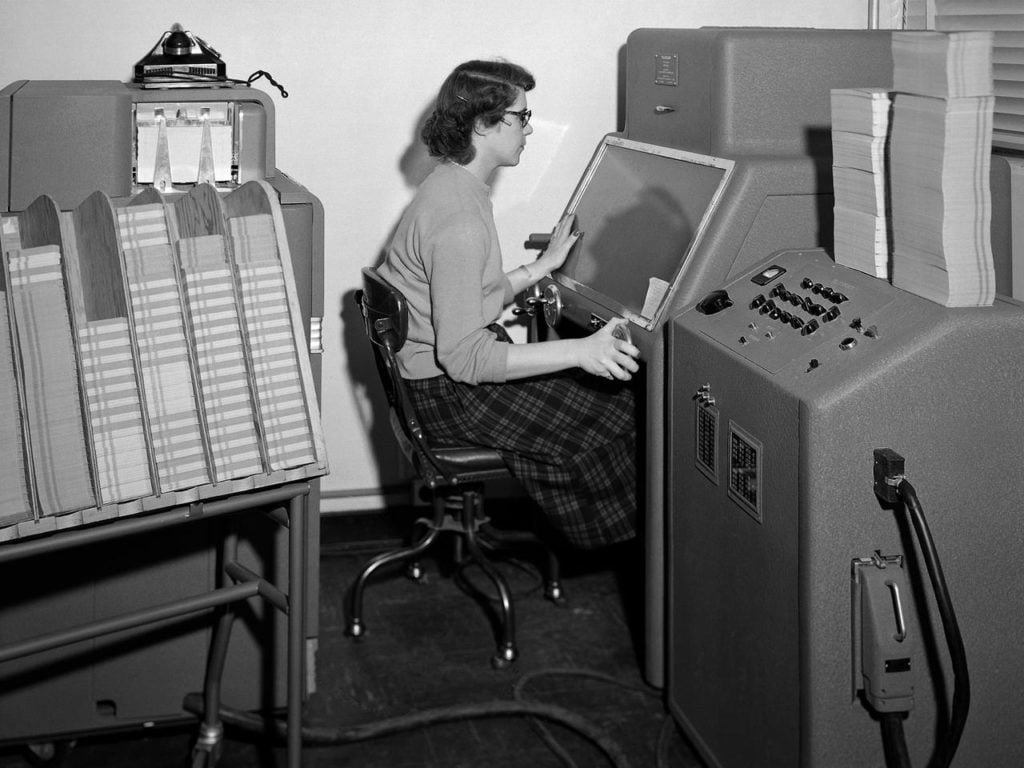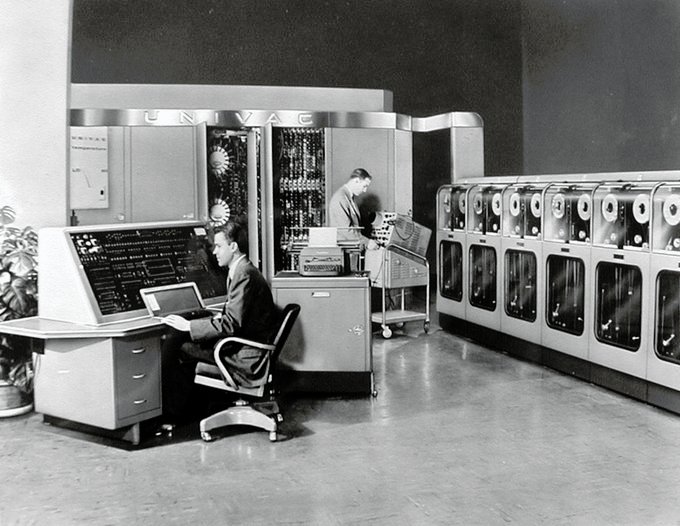The advent of the Electronic Numerical Integrator and Computer (ENIAC) marked a revolutionary moment in the history of computing, as it turned 75 years old in December 2021. Developed during World War II at the University of Pennsylvania, ENIAC stands as the world’s first general-purpose electronic digital computer. Its construction, spanning from 1943 to 1945, culminated in a machine of colossal proportions, occupying a space of 30 by 50 feet and boasting a staggering 17,468 vacuum tubes—a testament to its pioneering role in electronic computation.
ENIAC’s primary objective was to address the complex numerical calculations required for military purposes during the war. It played a pivotal role in tasks such as artillery trajectory calculations, demonstrating its versatility and capacity for solving intricate mathematical problems. The computer’s programmability, though unconventional by contemporary standards, marked a significant departure from earlier mechanical calculating machines. ENIAC’s programming involved physically rewiring the machine, a process that could take weeks or even months to implement, underscoring the dedication and meticulous effort required for each computation.
Beyond its wartime contributions, ENIAC left an indelible mark on the trajectory of computing technology. Its successful operation served as a proof of concept for electronic computing, setting the stage for subsequent generations of computers that would evolve to become smaller, faster, and more programmable. The legacy of ENIAC extends far beyond its original purpose, influencing the design and functionality of modern computers.
As we celebrate the 75th anniversary of ENIAC, it is an opportune moment to reflect on the journey from this colossal, tube-laden machine to the sleek, powerful devices that define our digital landscape today. This milestone prompts a consideration of the pioneers who laid the foundation for our digital age and a recognition of ENIAC’s enduring impact on the technological landscape. Join us in exploring the rich history, achievements, and lasting legacy of ENIAC—a machine that not only computed trajectories but also charted the course for the digital frontier.
Table of Contents
What is the world’s first general-purpose computer?
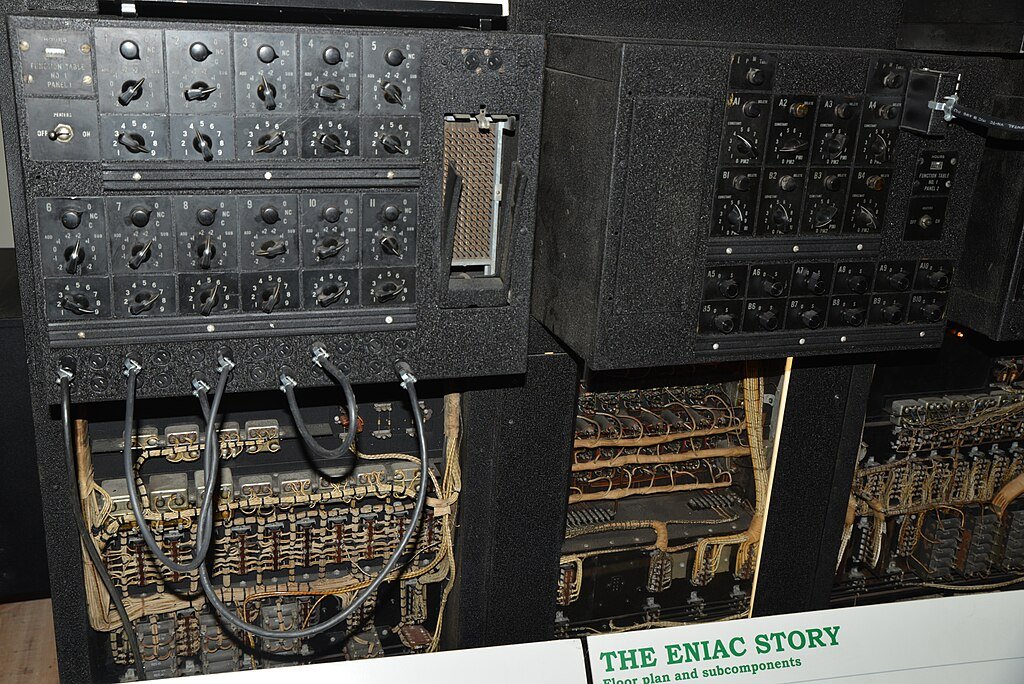
The world’s first general-purpose computer is widely recognized as the Electronic Numerical Integrator and Computer (ENIAC). Developed during World War II, ENIAC was a groundbreaking achievement in computing and turned 75 in December 2021. The project was initiated by the United States Army and led by engineers J. Presper Eckert and John Mauchly at the University of Pennsylvania.
ENIAC, completed in 1945, was an electronic, digital computer that utilized vacuum tubes for its logic gates. It was immense, occupying a space of 30 by 50 feet, and contained approximately 17,468 vacuum tubes. ENIAC’s primary purpose was to perform complex numerical calculations, particularly for artillery trajectory calculations during the war. What set ENIAC apart was its general-purpose nature, as it was designed to handle a wide range of computational tasks rather than being dedicated to a specific function.
One of ENIAC’s distinctive features was its programmability, albeit through a unique process. Programming ENIAC involved physically rewiring the machine, a labor-intensive task that required significant time and effort. Despite this unconventional approach, ENIAC demonstrated the feasibility of electronic computing and paved the way for subsequent advancements in the field.
ENIAC’s legacy extends beyond its wartime contributions; it played a crucial role in shaping the trajectory of computing technology, influencing the design and functionality of modern computers. As the first general-purpose electronic digital computer, ENIAC stands as a landmark in the history of computing, marking the beginning of a transformative era in technology.
What was the world’s first computer?
The world’s first general-purpose electronic digital computer is widely considered to be the Electronic Numerical Integrator and Computer (ENIAC). Developed during World War II, ENIAC was designed and constructed at the University of Pennsylvania, with construction starting in 1943 and completed in 1945. It officially became operational in December 1945. ENIAC was an enormous machine, taking up significant floor space (about 30 by 50 feet) and incorporating approximately 17,468 vacuum tubes, which were used as electronic switches.
ENIAC’s primary purpose was to solve complex numerical calculations, particularly those related to military applications during the war. It played a crucial role in tasks like artillery trajectory calculations, providing rapid and accurate results that were essential for wartime efforts. ENIAC’s architecture allowed it to be reprogrammed for different tasks, showcasing its versatility.
While ENIAC was not a personal computer by modern standards and had a different programming process involving physical rewiring, its successful operation demonstrated the feasibility of electronic computing. The experiences gained from building and using ENIAC laid the groundwork for subsequent developments in computing technology. ENIAC’s significance lies not only in its wartime contributions but also in its role as a pioneering machine that paved the way for the evolution of computers into smaller, faster, and more versatile devices, shaping the course of digital technology for decades to come.
What was the first special-purpose computer?

The first special-purpose computer is also attributed to the Electronic Numerical Integrator and Computer (ENIAC), a groundbreaking machine designed for specific numerical computations. ENIAC itself was a general-purpose computer, but its successor, the Electronic Discrete Variable Automatic Computer (EDVAC), is considered one of the first special-purpose computers.
EDVAC, whose design began in 1944 and was completed in 1952, was developed to address some of ENIAC’s limitations. It introduced the concept of storing programs and data in electronic memory, a significant departure from ENIAC’s reliance on manual rewiring for each new computation. This innovation laid the groundwork for modern computer architecture.
However, the title of the absolute “first” special-purpose computer is a matter of debate. Another early contender is the Harvard Mark I, an electromechanical computer completed in 1944. While it was not fully electronic, the Harvard Mark I was designed for specific scientific calculations, and its architecture influenced subsequent special-purpose machines.
Special-purpose computers were often created to solve particular problems more efficiently than general-purpose machines. Over time, as technological advancements continued, special-purpose computers evolved to cater to diverse fields, such as scientific research, business applications, and industrial automation. The development of special-purpose computers played a crucial role in shaping the trajectory of computing technology, paving the way for the diverse array of specialized machines that exist today.
World’s First General-Purpose Computer Turns 75: A Milestone Celebration

The world’s first general-purpose computer is considered to be the Electronic Numerical Integrator and Computer (ENIAC). ENIAC turned 75 on December 10, 2021. Here are some details about ENIAC and its significance:
Development and Construction
Developed as a classified military project at the University of Pennsylvania during World War II, the Electronic Numerical Integrator and Computer (ENIAC) stands as an iconic symbol of technological innovation. The project’s inception in 1943 marked a pivotal moment in the history of computing, driven by the imperative need for advanced computational capabilities in wartime efforts.
The construction of ENIAC unfolded amidst the urgency of the war, reflecting the collaborative efforts of engineers and scientists. Initiated in 1943, the project rapidly progressed, harnessing the skills of visionaries such as John W. Mauchly and J. Presper Eckert. The scale and complexity of ENIAC’s design were unprecedented, with its architecture incorporating a massive number of vacuum tubes for electronic computation.
By 1945, ENIAC stood as a testament to human ingenuity, its construction completed as a colossal machine occupying a space of 30 by 50 feet. Its purpose initially focused on artillery trajectory calculations and demonstrated the potential for electronic computing to revolutionize military operations.
ENIAC’s journey from a classified military project to an operational reality encapsulates a critical chapter in the evolution of computing technology. Its completion in 1945 not only contributed to the war effort but also laid the foundation for subsequent generations of computers, setting the stage for the digital revolution that would shape the world in the decades to come.
Design and Architecture
ENIAC, the Electronic Numerical Integrator and Computer, emerged as a pioneering electronic digital computer during the mid-20th century. With a colossal architecture comprised of approximately 17,468 vacuum tubes, it embodied the cutting-edge technology of its time. The extensive use of vacuum tubes, while innovative, resulted in a considerable physical footprint, occupying a significant space of about 30 by 50 feet.
Beyond its sheer size, ENIAC’s distinguishing feature was its versatility. It boasted the capability to execute a diverse array of calculations, marking a significant leap forward in computing capabilities. Unlike earlier machines designed for specific tasks, ENIAC’s general-purpose nature allowed it to tackle a wide range of numerical challenges, making it a groundbreaking milestone in the evolution of computing technology.
The reliance on vacuum tubes for logic gates reflected the predominant technology of the era, even though it came with inherent challenges such as heat generation and maintenance issues. Nonetheless, ENIAC’s successful operation demonstrated the feasibility of electronic computing and laid the groundwork for subsequent generations of computers. Its legacy endures not only as the inaugural general-purpose electronic digital computer but also as a testament to the ingenuity and innovation that paved the way for the digital age.

Purpose and Functionality
ENvisioned for wartime prowess, the Electronic Numerical Integrator and Computer (ENIAC) emerged during World War II as a groundbreaking solution for complex numerical calculations. Its design, undertaken at the University of Pennsylvania from 1943 to 1945, was specifically tailored to address the pressing military demands of the era. ENIAC’s primary mission was to perform intricate calculations, particularly those crucial for artillery trajectory computations, an essential element in achieving precise military targeting.
The significance of ENIAC in artillery trajectory calculations cannot be overstated. The speed and accuracy with which it could process vast amounts of numerical data allowed for rapid and precise computations, empowering military strategists with invaluable insights. This computational power proved instrumental in enhancing the effectiveness of artillery fire, ultimately influencing the outcomes of critical wartime engagements.
ENIAC’s role in military applications marked a turning point in the evolution of computing technology. Beyond its immediate wartime contributions, the successful operation of ENIAC demonstrated the feasibility of electronic computing, setting the stage for the development of subsequent generations of computers that would shape the landscape of technology and computation in the decades to come.
Programmability
ENIAC, the pioneering electronic computer, possessed programmability, albeit through a markedly distinct process compared to contemporary computers. Unlike the seamless code-based programming we associate with modern machines, ENIAC’s programming involved a hands-on, physical rewiring of the machine to adapt it to a new computational task. This intricate process, often requiring weeks or even months, showcased the remarkable dedication and effort invested in each computational endeavor.
ENIAC programming was labor-intensive and demanded meticulous attention to detail. Engineers and mathematicians had to manually reconfigure the machine’s intricate network of connections, adjusting switches and cables to define the specific sequence of operations required for a given computation. This process, while effective for its time, was time-consuming and limited the machine’s adaptability to rapid changes in computational requirements.
The complexity of rewiring ENIAC reflected the nascent stage of computer programming, where the notion of a digital code executed by a machine had yet to materialize fully. Despite the challenges, ENIAC’s programmability laid the groundwork for subsequent innovations, eventually leading to the development of more flexible and efficient programming methods in the evolution of computing technology. The laborious process of physically configuring ENIAC marked a crucial step in the historical journey toward the streamlined and user-friendly programming interfaces we enjoy in today’s advanced computing landscape.
Size and Scale
ENIAC, the Electronic Numerical Integrator and Computer was a colossal technological marvel with a substantial footprint, measuring approximately 30 by 50 feet. Its sheer size was a consequence of its reliance on vacuum tubes, an essential component of its electronic architecture. These vacuum tubes, serving as electronic switches, were instrumental in performing the logical operations required for computation. However, they were large, fragile, and notorious for generating substantial heat.
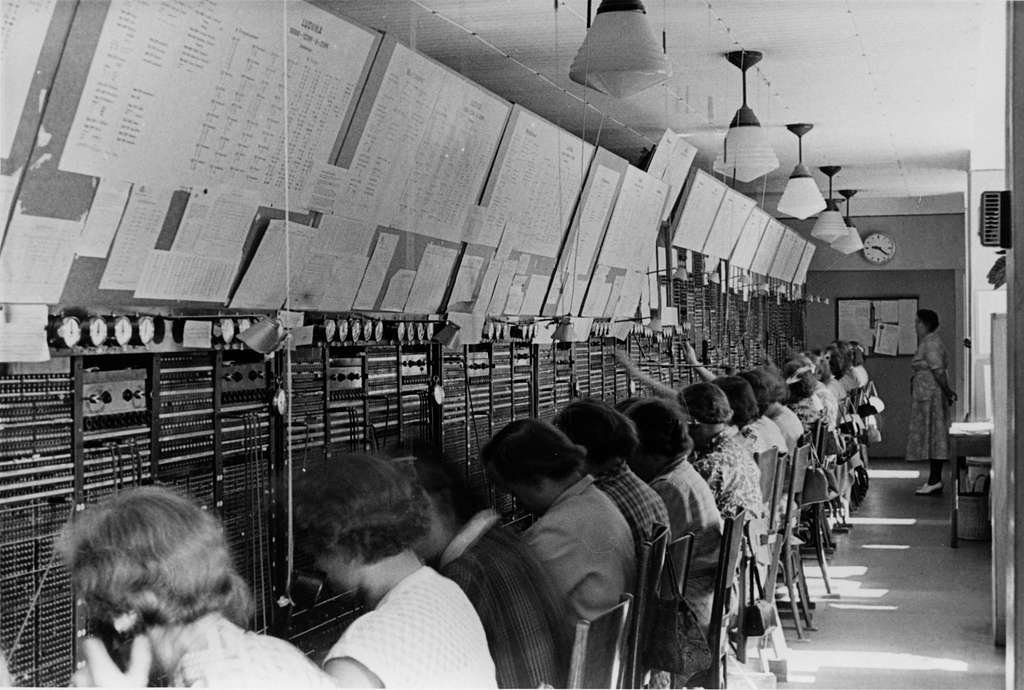
The extensive use of vacuum tubes in ENIAC’s design contributed not only to its immense physical dimensions but also to the challenges associated with heat dissipation. The sheer quantity of tubes, numbering around 17,468, meant that the machine required significant space to house them and intricate cooling mechanisms to prevent overheating. This colossal size and complex cooling setup showcased the ambitious nature of early electronic computing endeavors, where engineers grappled with the physical constraints imposed by the technology of the time.
Despite the challenges posed by its size and heat generation, ENIAC’s successful operation demonstrated the feasibility of electronic computing. The lessons learned from ENIAC’s design and construction paved the way for advancements in subsequent generations of computers as researchers and engineers continually sought ways to make computing more compact, efficient, and accessible.
Impact and Legacy
The development and operation of the Electronic Numerical Integrator and Computer (ENIAC) represented a watershed moment in computing history. Completed in 1945, ENIAC demonstrated the viability of electronic computing, marking a pivotal milestone in the evolution of technology. Its massive scale, employing 17,468 vacuum tubes, showcased the potential for harnessing electronic components for complex calculations, fundamentally altering the course of computational possibilities.
The experiences garnered from building and utilizing ENIAC profoundly influenced subsequent generations of computers. The challenges faced and lessons learned during its construction paved the way for advancements that transformed the landscape of computing. ENIAC’s programmability, albeit through manual rewiring, laid the groundwork for future innovations in programming languages and methodologies. The machine’s success catalyzed a paradigm shift, inspiring the development of smaller, faster, and more versatile computers.
ENIAC’s legacy extends far beyond its wartime contributions, shaping the trajectory of technological progress. The resilience and ingenuity displayed in overcoming the hurdles of its construction provided a blueprint for future generations of engineers and computer scientists. In commemorating ENIAC’s significance, we acknowledge its profound impact on the genesis of electronic computing, setting the stage for the dynamic and ever-evolving digital era.
Celebration of the 75th Anniversary
On December 10, 2021, a momentous milestone was reached as the world celebrated the 75th anniversary of ENIAC, the Electronic Numerical Integrator and Computer. This historic event was marked by a series of events and commemorations acknowledging the groundbreaking achievement that ENIAC represents in the field of computing.
The 75th-anniversary festivities were not merely a reflection of the passage of time; instead, they served as a tribute to the pivotal role ENIAC played in shaping the course of technological history. Various events were organized to highlight the significance of this electronic marvel, bringing together experts, historians, and enthusiasts to delve into the profound impact of ENIAC on computing.
Commemorative ceremonies likely included presentations and discussions that explored the intricacies of ENIAC’s design, its wartime contributions, and its enduring legacy. The celebrations were an opportunity to recognize the visionaries behind ENIAC, honoring their foresight and determination to push the boundaries of what was then considered possible in electronic computation.
As we marked the 75th anniversary of ENIAC, the world collectively acknowledged the transformative power of this pioneering machine, whose influence continues to resonate in the very fabric of our digital age. This commemoration not only celebrated a technological marvel but also paid homage to a significant chapter in the evolution of computing.
ENIAC, the pioneering Electronic Numerical Integrator and Computer, stands as a cornerstone in the evolution of computing technology. Its immeasurable contribution resonates through the decades, influencing the very essence of modern computers. As we commemorate its 75th anniversary, it’s an occasion to reflect on the profound impact ENIAC has had on the trajectory of computational advancement.
ENIAC’s legacy is embedded in the DNA of contemporary computing, shaping the design and functionality of today’s machines. Its colossal presence and groundbreaking capabilities marked a paradigm shift, proving the viability of electronic computing and laying the foundation for subsequent technological strides.
This milestone offers a poignant moment to contemplate the remarkable progress witnessed in the realm of computing since ENIAC’s inception. From the era of manual rewiring for each computation to the seamless programmability of modern computers, ENIAC’s journey encapsulates the relentless pursuit of innovation in the digital domain. The 75th anniversary serves as a beacon, guiding our reflection on the transformative journey from the massive vacuum-tube-laden machine to the sleek, powerful devices that define our digital landscape. In celebrating ENIAC, we acknowledge that it is not just a machine but a catalyst that sparked a revolution, propelling us into the dynamic and ever-evolving era of computing.








